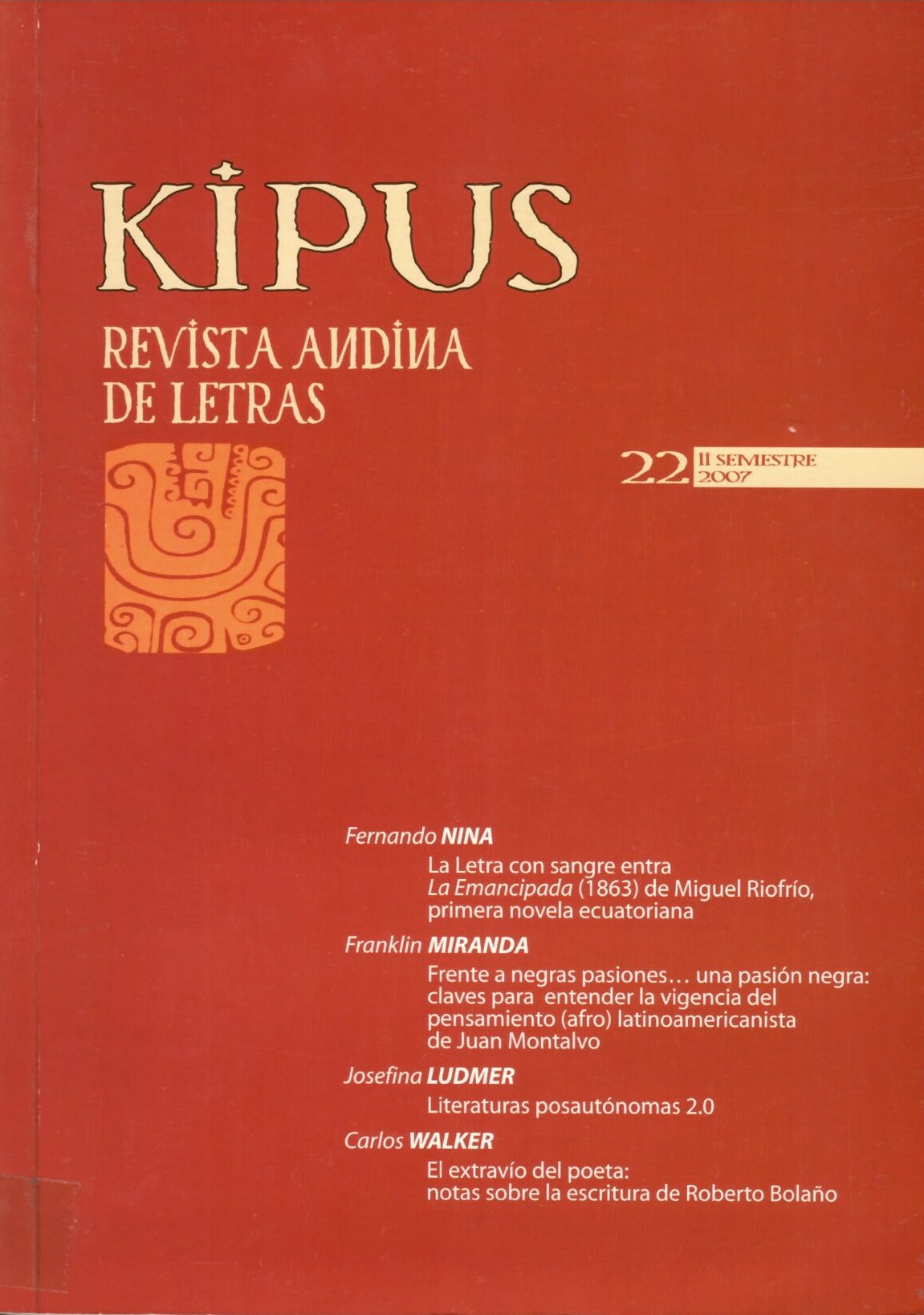Anatomías contrariadas: la representación del cuerpo en la literatura sobre los Andes
Contenido principal del artículo
Resumen
La autora analiza tres textos latinoamericanos que muestran construcciones del imaginario andino, extendidas a ciertos estereotipos sobre la corporalidad andina: frágil, dolorida, para la cual la esperanza de liberación radica en un azar. En «Boletín y Elegía de las Mitas», César Dávila presenta una versión del cuerpo indio «exclusivamente centrada en la vejación de lo anatómico» (de su cabeza y genitales, de órganos tan profundos como el corazón y el esqueleto), con lo que el cuerpo desnudo y forzado se convierte en ajeno. En «El sueño del Pongo», de José María Arguedas, el cuerpo del indio oprimido es diminuto, y porta una «gestualidad comprimida que se pone en juego a partir de posturas humilladas». Pese al final aparentemente optimista de ambos textos, se trata de productos culturales que cumplen un rol en el ejercicio de control social. En «Barraquera», de José de la Cuadra, el cuerpo de esta mujer es fundado a partir de violaciones, muertes y migraciones forzadas: habituado a sufrir y callar, para este cuerpo el dolor se convierte en la única vía posible de acceso al placer. Se remarca que el tiempo cronológico de los tres relatos es el de la espera, el tiempo del destino. Para estos cuerpos-lugares siempre vulnerables y violentados, burlados o invisibilizados,
lo fatal fundamentaría un cierre de lo histórico.
##plugins.themes.bootstrap3.displayStats.downloads##
Detalles del artículo
Sección

Esta obra está bajo una licencia internacional Creative Commons Atribución-NoComercial-CompartirIgual 4.0.
Cómo citar
Referencias
Arguedas, Alcides, Pueblo enfermo, La Paz, Librería Editorial Juventud, 1986 [1909].
Arguedas, José María, «El sueño del pongo (cuento quechua)», en Relatos completos, Madrid, Alianza, 1988 (1965).
Clifford, James, «Culturas viajeras», en Itinerarios transculturales, Barcelona, Gedisa, 1999.
Dávila Andrade, César, Boletín y elegía de las mitas, en Obras completas I. Poesía, Pontificia Universidad Católica del Ecuador, Sede Cuenca / Banco Central, Cuenca, 1984 [1959].
De la Cuadra, José, «Barraquera», en Horno y Repisas, Quito, El Conejo, 1985 [1931-1932].
Monasteiros, Elizabeth, Poéticas del conflicto andino, University of Pittsburg, 2005.
Salazar Baena, Verónica, «Construyendo los sujetos indígenas: la narrativa de César Dávila Andrade y la identificación de lo indígena con el dolor». Ensayo presentado como trabajo final de la materia «Enfoques plurales sobre el mundo andino », maestría en estudios culturales UASB, 2006.
Sanjinés, Juan, «Resolviendo el problema indio: la genealogía del discurso sobre lo autóctono», en El espejismo del mestizaje, La Paz, Embajada de Francia / IEFA / PIEB, 2005.


